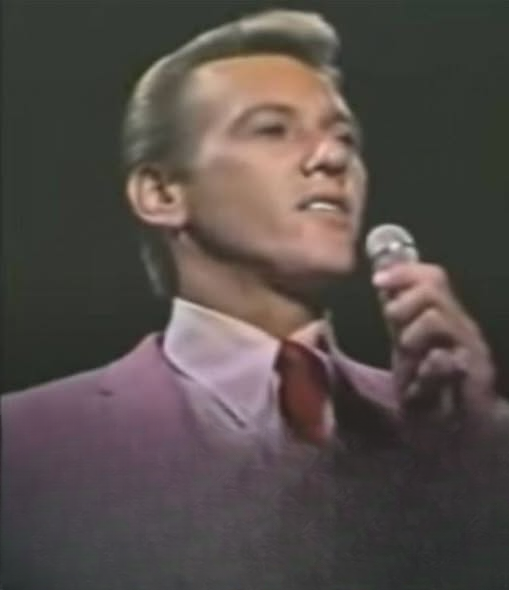Few songs in history have captured human emotion with such depth and timeless beauty as “Unchained Melody.” Written by Alex North and Hy Zaret in the early 1950s, the song has become far more than a melody — it’s a universal expression of love, longing, and the passage of time. Over the decades, it has transcended eras, genres, and even cultural boundaries, becoming one of the most recorded and performed songs in the modern era.
With over 670 cover versions recorded by artists around the world, “Unchained Melody” stands as a true testament to the emotional power of music. It is a song that has never faded from public consciousness, finding new meaning with every generation that rediscovers it.
The Birth of a Classic: The Origins of “Unchained Melody”
The story of “Unchained Melody” begins in 1955, when composer Alex North and lyricist Hy Zaret collaborated to create music for a lesser-known prison film titled Unchained. The film itself did not achieve commercial success, yet its theme song, written for a fleeting moment in cinematic history, went on to become one of the most cherished ballads of all time.
North, an acclaimed film composer, had already made a name for himself through his emotionally charged scores, while Zaret was known for his ability to craft lyrics that captured human vulnerability and heartache. Together, they crafted a song about yearning for love and freedom, themes that resonated far beyond the walls of any movie plot.
The song’s original purpose was simple: to serve as an emotional centerpiece for a story about a man longing to return home. Yet the melody’s haunting tone and poetic lyrics tapped into something deeper — a universal longing that every listener could understand.
The Song’s Early Reception
When Unchained premiered, few would have guessed that its theme song would outshine the movie itself. The first recorded version was performed by Todd Duncan, a classically trained baritone who lent the song a rich, soulful interpretation. Duncan’s voice carried both strength and sorrow, embodying the essence of a man yearning for love and redemption.
Soon after its release, “Unchained Melody” began to make waves in the music world. Multiple artists released their own renditions within the same year — a rarity even in the competitive 1950s music scene. Singers such as Les Baxter, Al Hibbler, and Roy Hamilton each offered unique takes, and several versions even charted simultaneously.
This early popularity proved that the song had a rare quality: it could connect deeply with listeners regardless of who sang it or how it was arranged.
The Righteous Brothers and the Sound of Immortality
A full decade later, in 1965, “Unchained Melody” found new life when The Righteous Brothers — a duo consisting of Bobby Hatfield and Bill Medley — recorded their now-legendary version. Produced by Phil Spector, the song’s haunting orchestration and passionate vocal delivery turned it into an instant classic.
Hatfield’s soaring voice carried the emotional weight of the song to new heights. His performance was both tender and powerful, filled with a vulnerability that could make even the most stoic listener feel a lump in their throat. The recording became an anthem for anyone who had ever loved deeply or lost someone dear.
Although it was originally released as a B-side to “Hung on You,” radio DJs across the country began flipping the record, favoring the emotional strength of “Unchained Melody.” Soon, the song topped charts and became one of the defining love ballads of the 20th century.
Its success was a combination of musical perfection and emotional truth. Every element — the slow build, the subtle instrumentation, and Hatfield’s heartfelt delivery — created an experience that felt almost spiritual.
Elvis Presley and the Reinvention of a Legend
When Elvis Presley performed “Unchained Melody” in the final years of his life, he transformed it once again. His live renditions, often accompanied by piano, revealed not only his vocal power but also his deep emotional connection to the lyrics.
Elvis’s version carried the weight of personal reflection. Audiences could feel the sincerity in every note, as though the King himself was using the song as a mirror for his soul. One of his most famous performances of “Unchained Melody” took place in 1977, shortly before his passing, where his voice trembled with both strength and fragility.
Fans have long described these renditions as some of the most moving moments in Presley’s career — moments that reminded the world that beyond the fame and spectacle, Elvis was a man with a deeply sensitive heart. His interpretation further cemented “Unchained Melody” as a universal anthem of love and loss.
“Ghost” (1990): A Revival for a New Generation
The power of “Unchained Melody” was reintroduced to global audiences in 1990 through the blockbuster film Ghost, starring Patrick Swayze and Demi Moore. In one of the most iconic romantic scenes in cinematic history — the pottery wheel sequence — the Righteous Brothers’ version played in the background, turning a simple act of creation into a moment of pure emotion.
This single scene redefined how people viewed the song. To many younger audiences, “Unchained Melody” was no longer an old tune from their parents’ generation; it became the soundtrack of everlasting love. After the movie’s release, the Righteous Brothers’ version climbed the charts once again — 25 years after its original debut.
The renewed popularity proved that some songs never age. Instead, they evolve, finding new relevance and meaning as time passes.
Musical Structure and Emotional Depth
One reason “Unchained Melody” continues to resonate is its musical simplicity paired with emotional complexity. The song’s structure is built around a gradual rise — a slow, steady climb that mirrors the feeling of yearning growing into emotional release.
The melody unfolds like a confession. It starts with soft, tender notes that evoke introspection and longing, and builds toward a dramatic crescendo that expresses the depth of human desire. This structure allows singers to showcase both technical skill and emotional depth, making it a favorite for vocalists across genres.
Lyrically, the song is a masterpiece of restraint. Every word feels essential, expressing timeless human emotions — separation, hope, and the ache of love that endures distance. Even without quoting the lyrics, one can feel the message: the song speaks to anyone who has ever waited for love or believed in reunion beyond separation.
Cultural Impact and Global Reach
What makes “Unchained Melody” extraordinary is its global reach. Artists from around the world — from Japan to France, from country singers to rock bands — have covered it, each infusing their own cultural and emotional flavor.
In the United Kingdom, artists such as Gareth Gates and Robson & Jerome revived the song in the 1990s, both achieving chart-topping success. In Asia, it became a staple in romantic films and television dramas. In Latin America, versions with Spanish lyrics brought the same timeless feeling to new audiences.
Every rendition reaffirms one truth: no matter the language or musical style, the song’s heart remains unchanged.
The Emotional Science Behind Its Appeal
Music psychologists often point to “Unchained Melody” as an example of emotional resonance through harmonic tension. The way the melody ascends and resolves triggers a physiological response, releasing dopamine and oxytocin — the same chemicals associated with love and nostalgia.
Listeners often describe feeling chills or tears without knowing exactly why. The song doesn’t just tell a story; it creates an emotional experience that feels deeply personal. This effect has helped it remain relevant across multiple generations, even as musical tastes evolve.
A Song That Defines Human Connection
At its core, “Unchained Melody” is about connection — the invisible thread between hearts separated by time, distance, or circumstance. Whether interpreted romantically, spiritually, or personally, the song’s message is universal.
It reminds listeners that love, in its purest form, transcends everything else. Even when words fail, music can express the emotions that lie just beyond language.
This is why the song continues to be played at weddings, memorials, and moments of reflection. It speaks to the continuity of love — an idea that never loses relevance.
Legacy in Popular Culture
From movie soundtracks and talent shows to commercials and YouTube covers, “Unchained Melody” continues to live on. It has appeared in numerous television series, films, and performances that pay tribute to its enduring message.
Contestants on shows like American Idol, The Voice, and Britain’s Got Talent often choose it to showcase their vocal range and emotional intensity. Each new performance reminds audiences why this song remains a benchmark of musical expression.
Moreover, it has inspired countless romantic moments, often played during first dances, proposals, or anniversaries. For many, hearing those first notes instantly evokes memories of deep affection or longing.
Alex North and Hy Zaret: The Unsung Heroes
While the performers of “Unchained Melody” have received fame and recognition, its creators — Alex North and Hy Zaret — also deserve immense credit. Their partnership exemplified how music and words can merge to form something eternal.
North’s background in composing for film gave the song cinematic scope, while Zaret’s poetry turned that sound into something profoundly human. Interestingly, Zaret initially refused to use the word “unchained” in the lyrics, feeling it was too literal. Instead, he focused on universal emotions — love, hope, and separation — allowing the song to stand independently from the film’s narrative.
Their collaboration shows how timeless art often comes from unexpected origins.
Why “Unchained Melody” Still Matters Today
In an age where digital production and short attention spans dominate, “Unchained Melody” remains a powerful reminder of simplicity and authenticity. It demonstrates that emotion, not technology, is what makes music eternal.
Young listeners continue to discover the song through streaming platforms, often finding it featured in playlists for romance, nostalgia, or cinematic classics. Social media platforms like TikTok have even revived snippets of it, proving that great art can transcend not only generations but also platforms.
Its emotional power remains undiminished because it captures something universal — the longing to be reunited with someone you love.
Interpretations and Personal Meanings
Each listener interprets “Unchained Melody” differently. For some, it represents romantic love — the ache of missing someone and the hope of reunion. For others, it symbolizes spiritual faith, the belief that souls are bound together beyond life itself.
This adaptability makes it more than just a love song; it becomes a mirror reflecting each listener’s own story. In that sense, the song doesn’t belong to any one person or time — it belongs to everyone.
Modern Covers and Continued Influence
Even in the 21st century, artists continue to revisit “Unchained Melody.” Musicians such as LeAnn Rimes, Susan Boyle, and Pentatonix have recorded modern renditions that bring new textures to the timeless tune.
These versions highlight how a song written in the 1950s can still sound fresh, relevant, and emotionally compelling in today’s world. The continued reinterpretation keeps its legacy alive while introducing it to younger generations who might never have heard of its cinematic beginnings.
The Power of Timeless Art
The staying power of “Unchained Melody” lies not only in its composition but in its emotional honesty. Great art doesn’t fade because it taps into truths that never change — love, separation, and the hope of reunion.
As the years pass, the world continues to change, but songs like this remain constant, offering comfort and connection when words are not enough. Whether played on a vinyl record, a streaming app, or performed live, “Unchained Melody” carries the same impact it did over half a century ago.
Conclusion: The Song That Will Never Fade
“Unchained Melody” began as a simple movie theme but evolved into one of the most beloved songs in history. From Todd Duncan’s original recording to The Righteous Brothers’ legendary version, from Elvis Presley’s heartfelt performances to its emotional revival in Ghost, it has continued to touch lives across decades.
More than just music, it is an emotion — one that speaks directly to the human soul. Its melody remains unchained by time, unbound by genre, and unchanged in its power to move the heart.
As long as people continue to love, to long, and to hope, “Unchained Melody” will echo through generations — a song that reminds us that love, once truly felt, never fades away.




